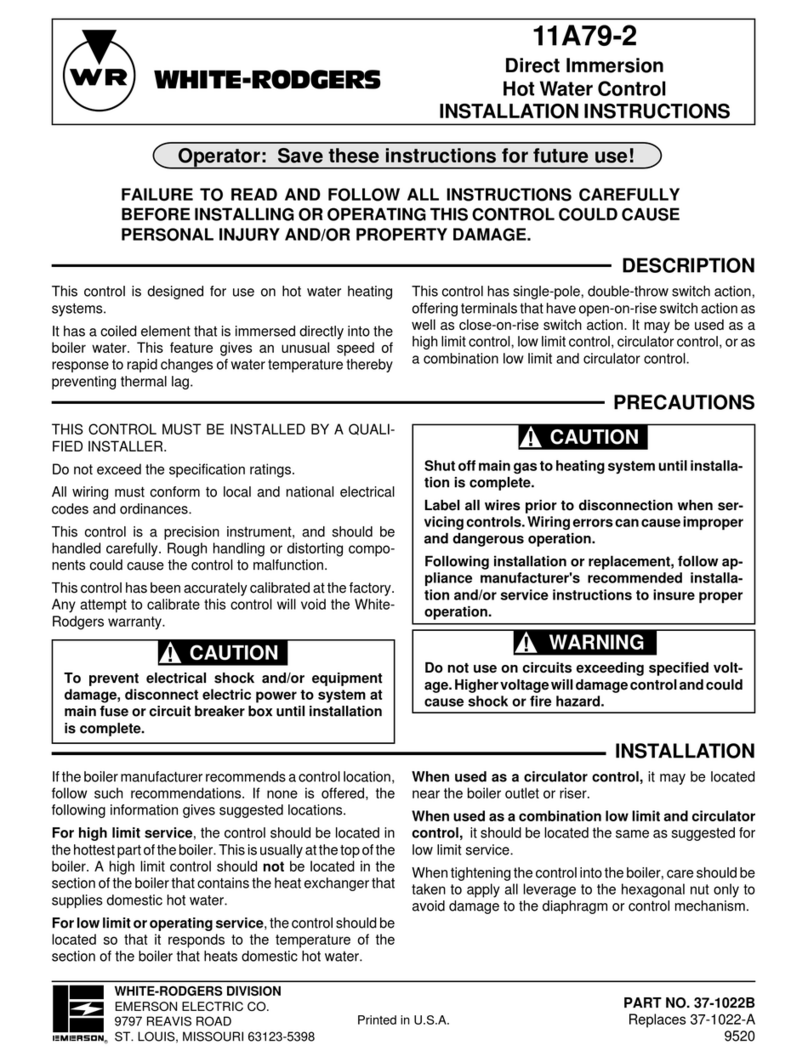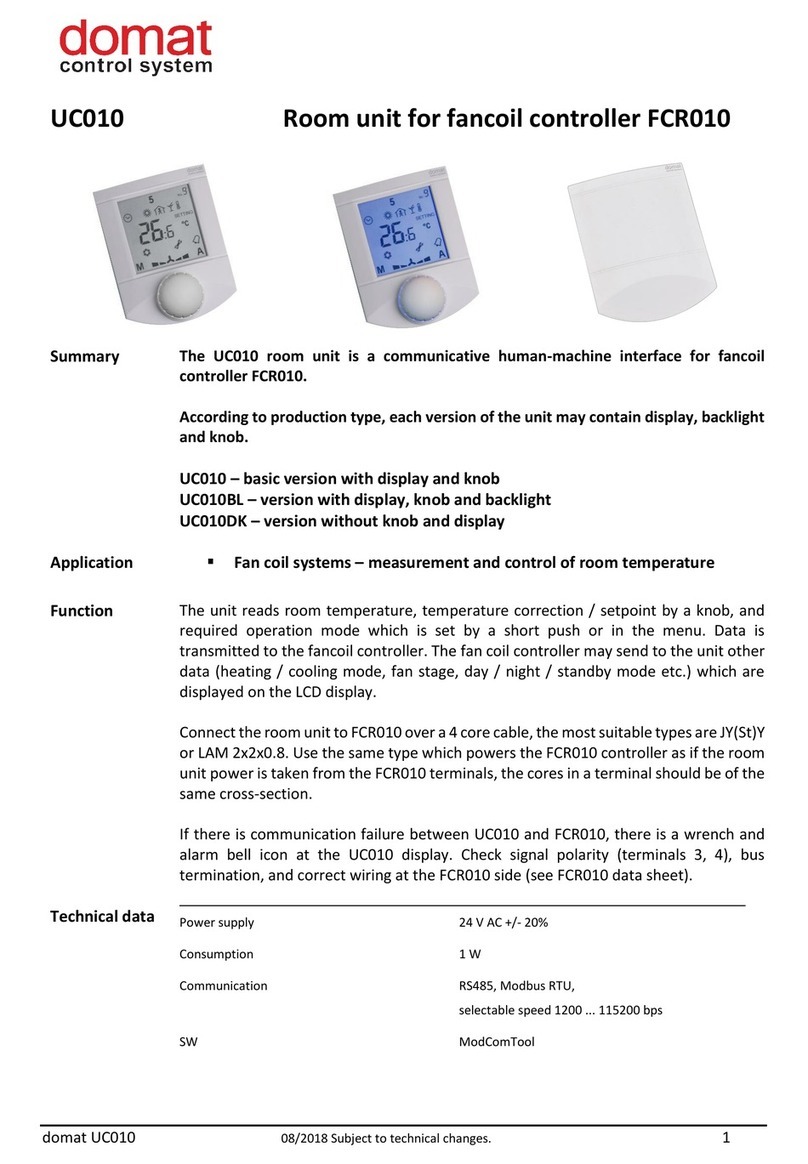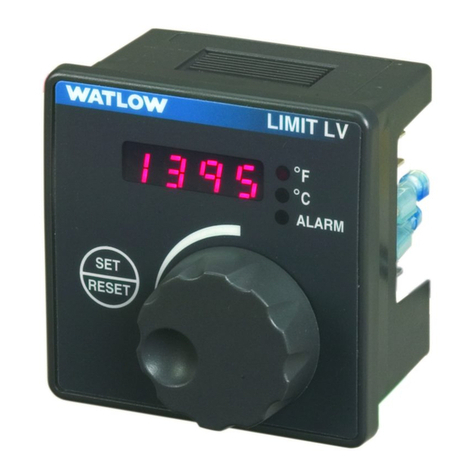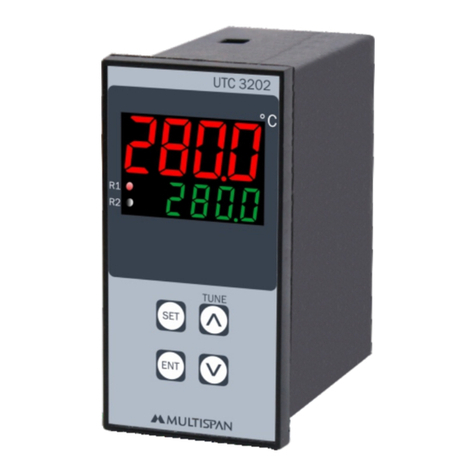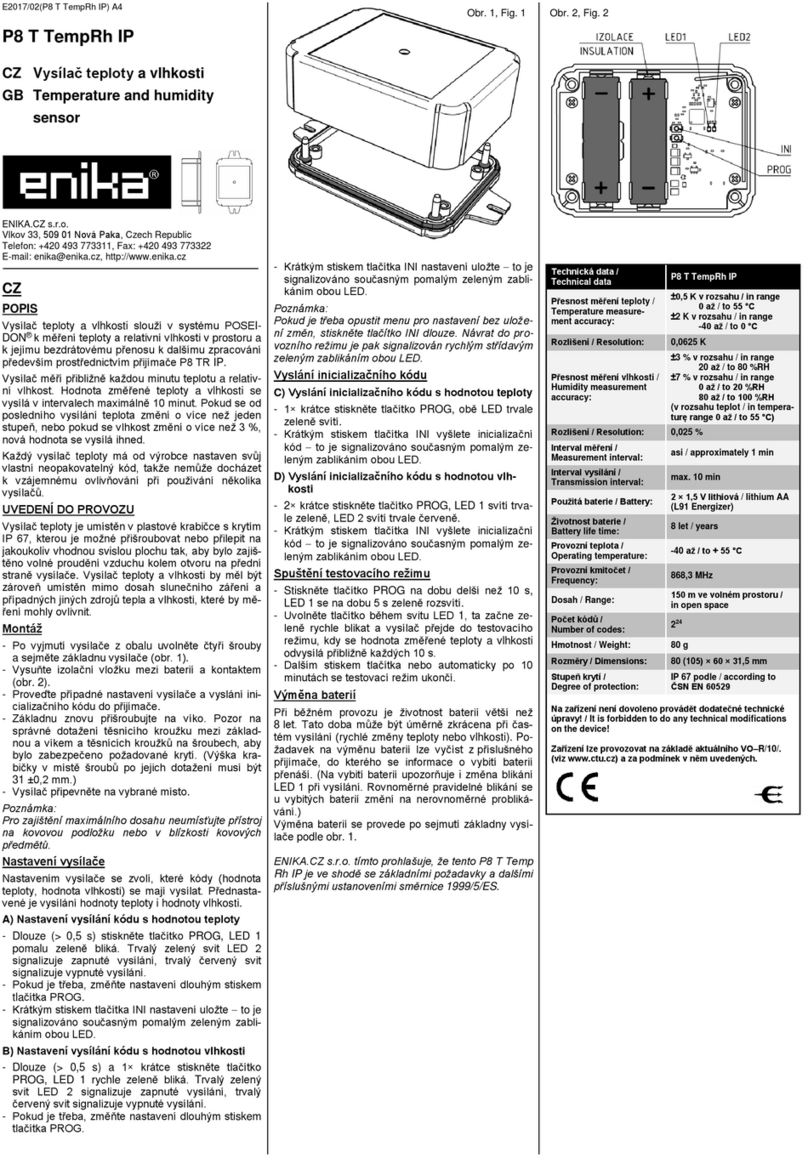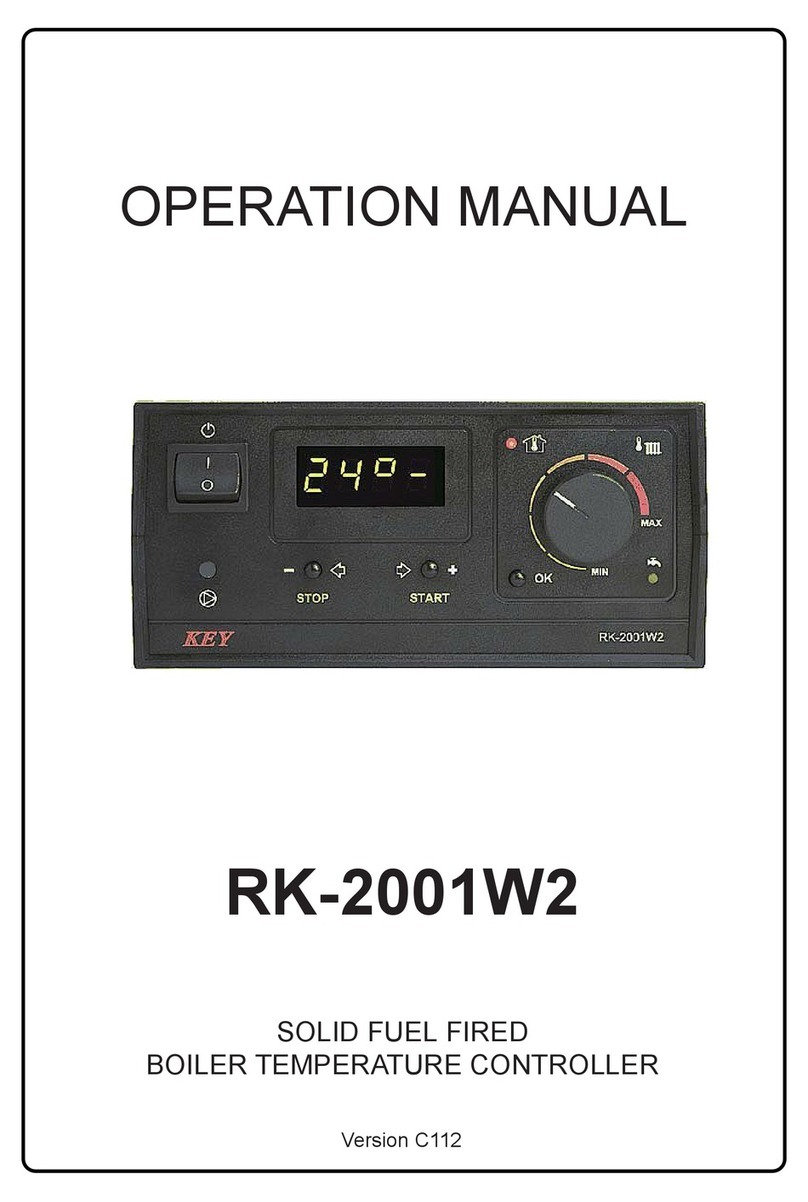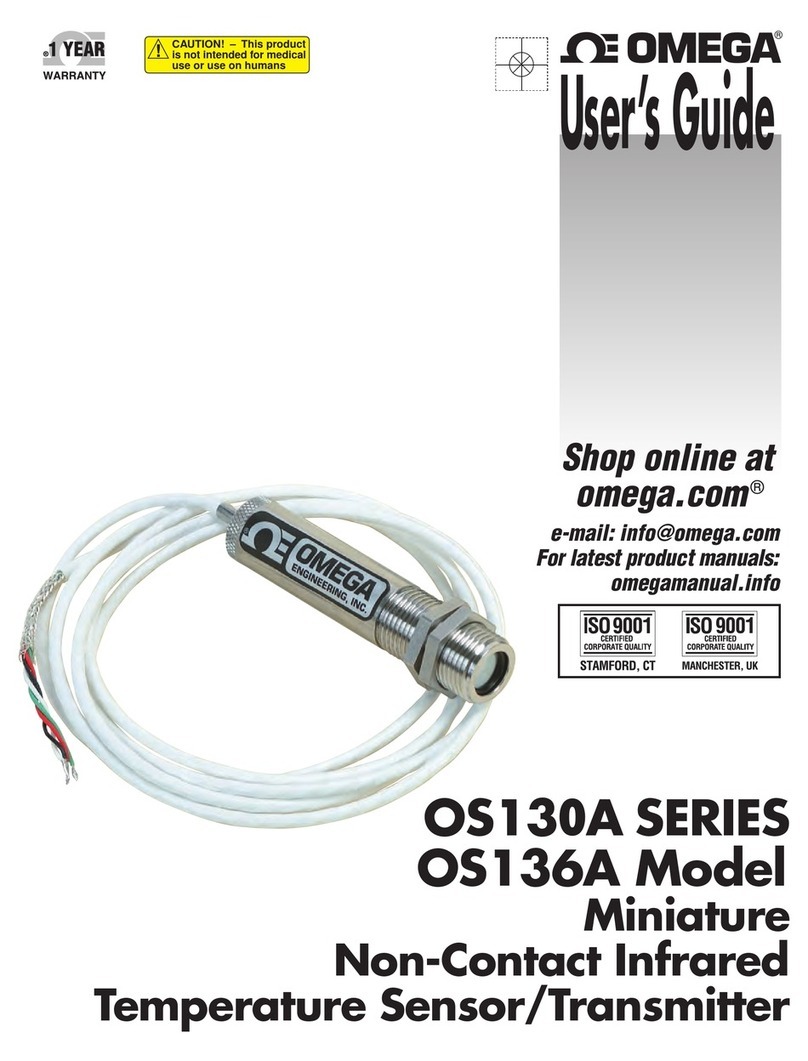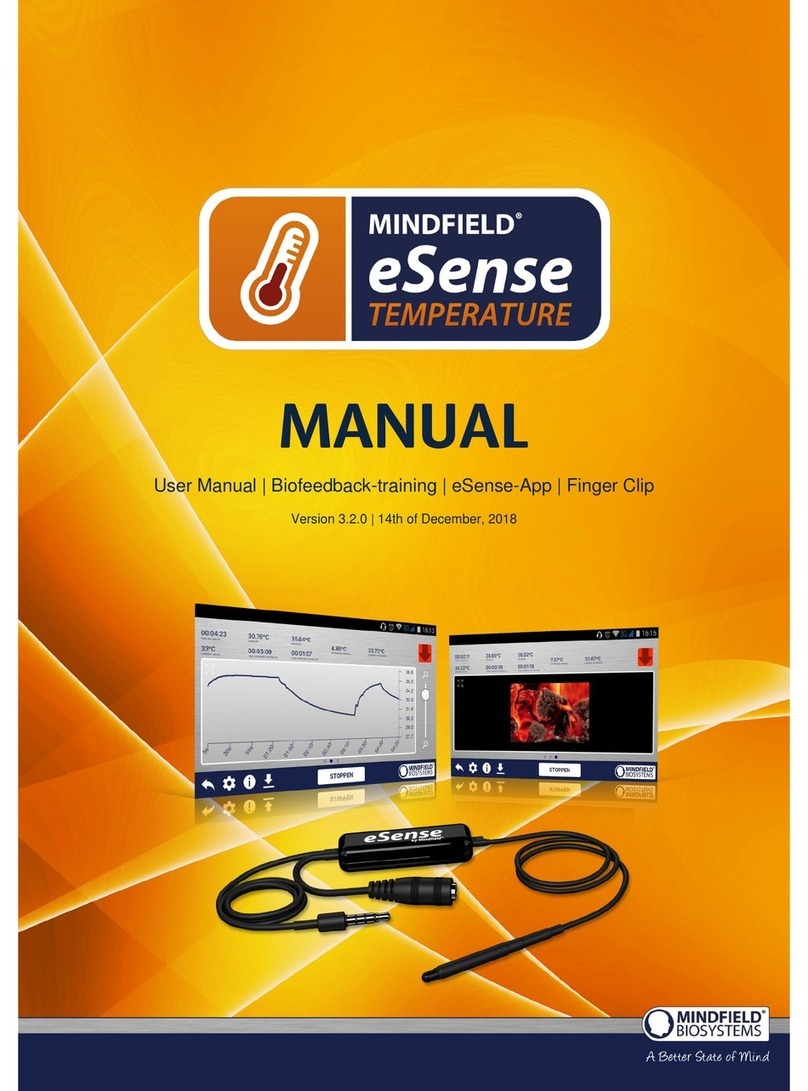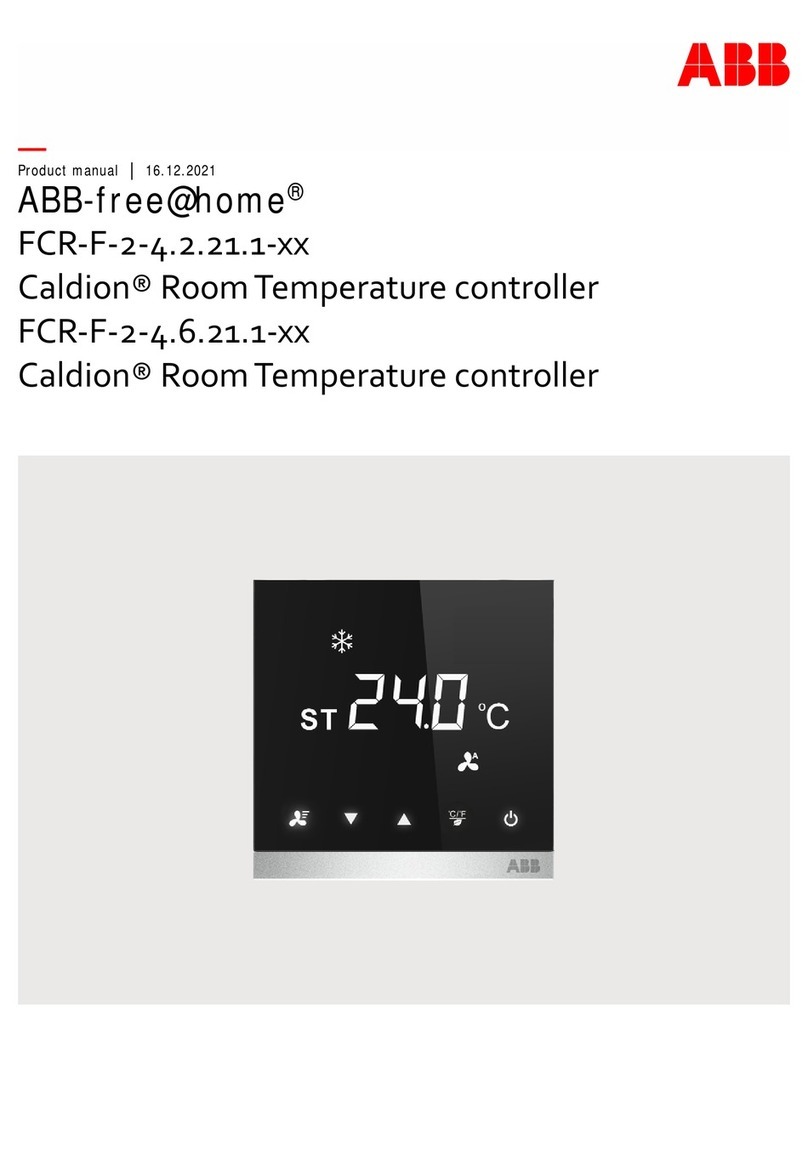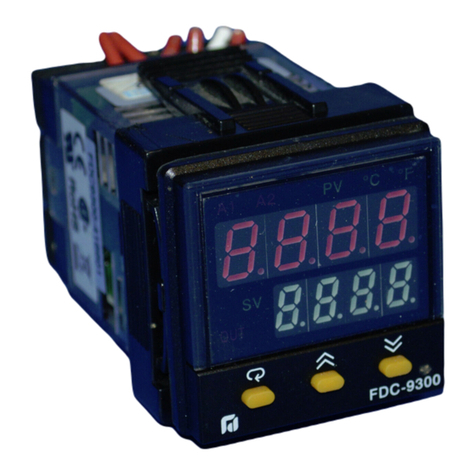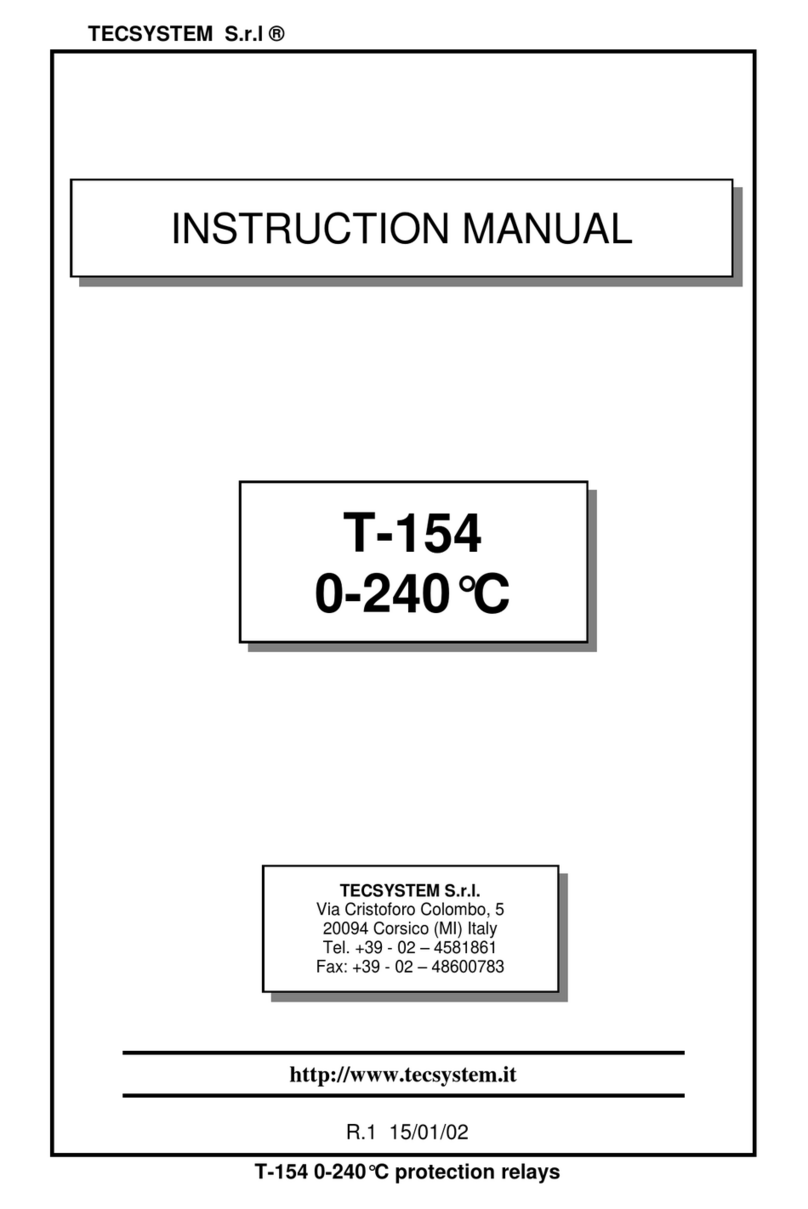MEIER-BRAKENBERG D-Line + MBWeich 4 Operation and maintenance manual

Seite 1
High pressure cooling
Assembly instruction
and Operators manual
Pump unit &Controller Type: D-Line + MBWeich 4
d
MEIER-BRAKENBERG GmbH &Co. KG
Brakenberg 29 ● 32699 Extertal
Tel: +49(0)52 62/993 99-0 ● Fax: +49(0)52 62/993 993
info@meier-brakenberg.de
www.meier-brakenberg.de
Pressure cleaning systems ● Animal scales ● Soaking and cooling units ●Disinfection ● Drinking systems and medication

Seite 2
Informations obout producer / service
Producer:
Firma Meier Brakenberg GmbH & Co KG
Brakenberg 29
D-32699 Extertal
Tel.: +49 (0) 5262 / 99399 - 0
Fax: +49 (0) 5262 / 99399 - 3
e-mail: info@meier-brakenberg .de
Internet: www.meier-brakenberg.de
Service:
Firma Meier Brakenberg GmbH & Co KG
Brakenberg 29
D-32699 Extertal
Tel.: +49 (0) 5262 / 99399 - 0
Fax: +49 (0) 5262 / 99399 - 3
e-mail: info@meier-brakenberg .de
Internet: www.meier-brakenberg.de

Seite 3
Table of contents
1Introduction................................................................................................................................................. 5
1.1 Description MEIER-BRAKENBERG Top-Climate-System.................................................................. 6
1.2 Notational conventions........................................................................................................................ 7
1.3 Warranty and liability........................................................................................................................... 7
1.4 Copyright............................................................................................................................................. 8
1.5 Guarantee terms ................................................................................................................................. 8
2Safety ......................................................................................................................................................... 9
2.1 General safety information.................................................................................................................. 9
2.2 Safety measures before startup........................................................................................................ 10
2.3 Safety measures during normal operation........................................................................................ 10
2.4 Intended use...................................................................................................................................... 10
2.5 Hazards due to electricity.................................................................................................................. 11
2.6 Further hazards................................................................................................................................. 12
2.7 Safety devices and guards................................................................................................................ 12
2.8 Obligations of the plant operator....................................................................................................... 12
2.9 Personnel requirements.................................................................................................................... 13
2.9.1. Responsibilities.......................................................................................................................... 13
2.9.2. Qualifications required by personnel ......................................................................................... 14
2.9.3. Obligations of personnel ............................................................................................................ 14
2.9.4. Unauthorized persons................................................................................................................ 14
2.10 Instruction...................................................................................................................................... 14
3Assembly instruction................................................................................................................................. 16
3.1 Installation of the pump unit .............................................................................................................. 16
3.2 Installation of the filter unit ................................................................................................................ 17
3.3 Installation of additional modules...................................................................................................... 18
3.4 Installation MEIER-BRAKENBERG Touch Controller....................................................................... 19
3.4.1. Connection of external climate computers and sensors............................................................ 20
3.4.2. CAN connection......................................................................................................................... 20
3.5 Installation of connecting pipes and nozzle lines.............................................................................. 21
3.5.1. Positioning and orientation of nozzle lines................................................................................. 21
3.5.2. Cutting ring fittings ..................................................................................................................... 24
3.6 Last steps of the assembly................................................................................................................ 25
4Operators manual..................................................................................................................................... 26
4.1 First start-up...................................................................................................................................... 26
4.2 Temporary shut-down and restarting................................................................................................ 26
4.3 Water quality ..................................................................................................................................... 27
4.4 Disinfection/medication ..................................................................................................................... 27
4.5 Operation pump system.................................................................................................................... 28
4.5.1. Pressure regulator/bypass valve ............................................................................................... 29
4.5.2. Pressure switch/sensor.............................................................................................................. 29
4.5.3. Thermo valve ............................................................................................................................. 29

Seite 4
4.5.4. Additional fan ............................................................................................................................. 29
4.6 Further system components.............................................................................................................. 29
4.6.1. Pressure relief............................................................................................................................ 29
4.6.2. High pressure nozzles ............................................................................................................... 30
4.7 Operation Touch Controller............................................................................................................... 31
4.7.1. Function keys............................................................................................................................. 32
4.7.2. Menu overview........................................................................................................................... 34
4.7.3. Start-up ...................................................................................................................................... 35
4.7.4. Change values........................................................................................................................... 35
4.7.5. Special functions........................................................................................................................ 36
4.7.6. System parameter...................................................................................................................... 37
4.7.7. Software update performance.................................................................................................... 39
5Maintenance............................................................................................................................................. 40
6Troubleshooting........................................................................................................................................ 42
7Anschlusspläne/Wiring plans ................................................................................................................... 46
7.1 Touch Controller MBWEICH3 ........................................................................................................... 46
7.2 Touch Controller MBWEICH4 ........................................................................................................... 47
7.3 Touch Controller LC-2....................................................................................................................... 48
7.4 Touch Controller LCS-2 .................................................................................................................... 49
7.5 Touch Controller LCM....................................................................................................................... 50
7.6 Touch Controller LCM vario .............................................................................................................. 51
7.7 Erweiterungsboxen/Extension boxes................................................................................................ 52
7.8 Anschlussschema Vario-System/Connection scheme Vario-system ............................................... 53
7.9 Pumpe inkl. MBWEICH3/Pump incl. MBWEICH3............................................................................. 54
7.10 Pumpe Sonderspannung/Pump special voltage ........................................................................... 55
7.11 Pumpe Vario inkl. LCM vario/Pump Vario incl. LCM vario............................................................ 56
8Technische Daten/Technical data............................................................................................................ 57

Seite 5
1 Introduction
This manual contains all information you need for the installation and the operation of the MEI-
ER-BRAKENBERG Top-Climate-System. The manual facilitates the understanding and shows
the intended use of the system.
This manual provides all information you need to install and later run the system safely, appro-
priately and economically. Following the instructions helps avoiding hazards, reducing repair
costs and downtime and increasing lifetime.
All persons responsible for running the system must read, understand and heed the manual.
This applies in particular to the safety information that is given. After reading this manual you
will be able to:
install the Top-Climate-System properly,
operate the Top-Climate-System safely,
maintain the Top-Climate-System according to the rules,
clean the Top-Climate-System according to the rules,
take the necessary action in the event of a fault.
In addition to this operators manual, it is necessary to comply with general laws and other regu-
lations concerning accident prevention and environmental protection in the country of use.
This manual is part of the pump unit. It must be kept within reach throughout the system’s ser-
vice life and must also stay with the system if it is sold. This manual is not subject to a change
service. You can find out about the current status at
Meier Brakenberg GmbH & Co KG
Brakenberg 29
D-32699 Extertal
Tel.: +49 (0) 5262 / 99399 - 0
Fax: +49 (0) 5262 / 99399 - 3
e-mail: info@meier-brakenberg .de
web: www.meier-brakenberg.de

Seite 6
1.1 Description MEIER-BRAKENBERG Top-Climate-System
The MEIER-BRAKENBERG Top-Climate-System is a cooling and humidifying system for agri-
cultural houses and industrial buildings. It is designed for an effective and efficient cooling, hu-
midifying and cleaning of the air inside the house. The working principle is direct evaporative
cooling.
The main components of the system are a high pressure pump unit with an electronic controller
which supplies water with a pressure of 70 bar. The water is distributed in stainless steel pipes
to high pressure fogging nozzles which atomize the water. The extremely small droplets evapo-
rate immediately. The necessary heat energy is extracted from the air –the air cools down. This
cooling effect can reduce the necessary ventilation rate which can save energy. The MEIER-
BRAKENBERG Top-Climate-System is also used to increase the humidity during heating peri-
ods and after the date of entry of young animals.
The electronic controller is responsible for the evaluation of the applied electrical signals from a
climate computer or its own humidity and temperature sensors. The controller switches the
pump and the valves accordingly. In addition, control functions are integrated into the controller
to ensure safe, reliable and long-lasting operation of the system.
NOTE
The system must be monitored regularly despite the built-in control and alarm function - Sever-
al times a day on climatically extreme days.
The Top-Climate-System is intended exclusively for evaporative cooling or air humidification, for
example in stables. Any use beyond this is considered not intended. The manufacturer is not li-
able for any resulting damage. The risk is borne solely by the user. Intended use also includes
observance of all instructions in these assembly instruction and operation manual. Non-
observance of the instructions or improper use will void any warranty claims.
Installation, maintenance and repair work may only be carried out by qualified personnel.

Seite 7
1.2 Notational conventions
Passages of this manual that require special attention or that are a direct hazard warning are
shown as follows:
DANGER
Warning of electrical hazard
This warning indicates an electrical hazard.
Only qualified and authorized specialists are allowed to work on electrical equipment.
DANGER
This warning indicates a direct hazard which, unless avoided, involves a high risk of death or
(serious) injury.
WARNING
This warning indicates a potential hazard which, unless avoided, may involve a medium risk of
death or (serious) injury.
CAUTION
This warning indicates a hazard which, unless avoided, could involve a low risk of slight or me-
dium injury.
NOTE
This warning indicates a hazard which, unless avoided, could involve a low risk of material
damage.
Important information!
This symbol indicates information about the controller function or setting, or infor-
mation that care is required.
The following notational conventions are also used:
- Text following this mark represents an item in a list.
“ “ Text in double quotation marks refers to other chapters, sections or documents.
►Text following this mark represents a result of the above mentioned action.
1.3 Warranty and liability
The obligations under the supply contract, the general and delivery terms and conditions of
MEIER-BRAKENBERG GmbH & Co. KG and the legal regulations in force at the time the con-
tract was signed will apply. All information in this manual has been compiled in line with the ap-
plicable standards and regulations, the state of the art and longstanding
knowledge and experience. Warranty and liability claims for personal injury and material dam-
age are excluded if they are attributable to one of the following causes:
Unintended or inappropriate use of the system,

Seite 8
Inappropriate installation, commissioning, operation, maintenance or cleaning of the
system,
Operation of the system with defective safety devices or with improperly fitted or non-
functional safety devices and guards,
Failure to heed information in the installation instructions regarding installation, commis-
sioning, operation, maintenance and cleaning of the system,
Deployment of untrained personal,
Structural alterations to the system (conversions or other alterations to the system are
not allowed to be made without prior written permission from MEIER-BRAKENBERG
GmbH & Co. KG; any breach of this causes the controller to lose its EC conformity),
Technical alterations,
Improperly executed repairs,
Use of nonpermitted spare parts or of spare parts that do not satisfy the technically es-
tablished requirements,
Disasters, effects of extraneous elements and force majeure.
We reserve the right to make technical alterations in the course of further development and im-
provement of features.
1.4 Copyright
This manual is protected by copyright and intended for internal use only.
This manual or parts thereof must not be passed or disclosed to any third party or be repro-
duced or exploited in any form without the prior written consent of MEIER-BRAKENBERG
GmbH & Co. KG except for internal use.
Contravention is an offense and results in liability for damages (German Copyright Act UrhG;
German Civil Code –BGB). All rights are reserved in the event of the grant of patent or the reg-
istration of a utility model or design.
1.5 Guarantee terms
The guarantee terms are contained in the general terms and conditions of MEIER-
BRAKENBERG GmbH & Co. KG.

Seite 9
2 Safety
The following safety information must be read carefully before working on the system and must
be heeded. It concerns your safety and is intended to prevent hazards and/or injuries.
WARNING
Failure to observe the safety information below may have serious consequences:
Risk to persons due to electrical, mechanical or chemical effects,
Failure of important functions of the system.
Read the safety and hazard information in this section thoroughly before putting the system in-
to operation.
In addition to the information specified in this manual always comply with general safety and
accident prevention regulations.
In addition to the information specified in this manual the plant operator/machine operator
must comply with national occupational, health and safety regulations. It is also important to
follow internal rules and regulations.
2.1 General safety information
The following general safety information has to be observed:
Always read and understand the operators manual before operating the system.
Only use the system for its intended purpose(see chapter 2.4 “Intended use“)
Never operate the system without associated guards and safety devices. Never take fit-
ted safety devices out of operation.
Always keep the work area around the system clean and tidy to prevent hazards due to
dirt and things lying around.
Do not exceed the technical data (see chapter 8 “Technische Daten/Technical data”).
Only trained personnel are allowed to operate or work on the system.
Do not start the system if other persons are in the danger zone.
Take the system out of operation immediately if a fault occurs. Have faults rectified by
appropriately qualified personnel.
Always keep the operators manual at the place where the system is used. It must be
ensured that all persons dealing with the system are able to view the operators manual
at any time.

Seite 10
2.2 Safety measures before startup
Familiarize yourself with the system‘s
Operating and control elements,
features,
working principles,
immediate environment,
safety devices,
measures for an emergency.
Carry out the following activities before every startup:
Inspect the system for visible damage; rectify any detected defects immediately or re-
port them to the supervisory staff –the system must only be operated in a perfect condi-
tion.
Remove all objects and other materials that are not needed to operate the system out of
its work area.
2.3 Safety measures during normal operation
Carry out the following inspection activities every day:
Inspect the system for externally visible damage.
Also pay attention to the instructions and information in or concerning higher-level oper-
ating manuals or control systems.
2.4 Intended use
The safety of the system is only ensured if it is used as intended. The system is made for cool-
ing and humidifying the air inside a house only.
The system is not intended for another use than as described here; other use counts as inap-
propriate, e.g. pumping liquids other than water. The manufacturer/supplier is not liable for any
resulting damage. The risk is borne solely by the user.
Intended use also includes
Heeding all information from the operators manual,
Complying with the inspection and maintenance intervals,
Complying with the operating and maintenance conditions,
Taking foreseeable misconduct into consideration.
It is necessary to comply with the technical specifications in chapter 8 “Technische
Daten/Technical data“ without exception.
The system is not allowed to be converted or otherwise altered without prior written permission
from MEIER-BRAKENBERG GmbH & Co. KG.
Any breach of this causes the system to lose its EC conformity. Such a breach absolves the
manufacturer of the machine from warranty. Any parts not in a perfect state must be replaced
immediately. Parts and special features not delivered by MEIER-BRAKENBERG
GmbH & Co. KG are not released for use with the system.

Seite 11
Important Information!
Only use the system as intended; otherwise there is no guarantee of safe and
reliable operation.
It is not the manufacturer but the plant operator who is responsible for any
and all personal injuries and material damage resulting from unintended use!
2.5 Hazards due to electricity
DANGER
Warning of electrical hazard!
Touching live parts or parts that have become live due faults, poses a direct risk of death. Dam-
age to the insulation or individual parts can be fatal hazard. Short-circuits and overloading pose
the risk of being hit by ejected molten parts.
Always keep the control cabinet and all electricity supply units locked. Access is only al-
lowed for authorized persons with a key or special tool.
Always run the controller with the correct electrical voltage.
Only electrical specialists are allowed to work on the controller’s electrical equipment.
Regularly inspect the controller’s electrical equipment for defects such as loose connections
or damaged insulation.
If there is a damage, switch off the power supply immediately and have the damage re-
paired.
When working in the electrical equipment always shut off the power and verify safe isolation.
Switch off the power supply during maintenance, cleaning and repair work and prevent un-
expected restoration on power.
Never bypass fuses or take them out of operation. When replacing fuses, pay attention to
the correct amperage.
Keep moisture away from live parts as it can cause short-circuits. Never clean the electrical
equipment with water or similar liquids.
Have the electrical equipment and fixed electrical apparatuses tested by an electrical spe-
cialist every four years at least.
Alterations made after testing must comply with DIN EN 60204-1.
Observe the regulations of VDE (Verband der Elektrotechnik Elektronik Informationstechnik
e.V.) or IEC (International Electronical Commission) and the national accident prevention
regulations for electrical systems and equipment.

Seite 12
2.6 Further hazards
WARNING
Injury hazard from hydraulics/pneumatics!
Work on hydraulic equipment may only be done by qualified personnel. All lines, hoses and fit-
tings must be properly installed and checked regularly for leaks and externally visible damage.
Damage must be repaired immediately. Splashing liquids can lead to injuries.
Before starting repair work depressurize system sections and pressure lines to be opened. Se-
cure the system against being switched on again.
CAUTION
Injury hazard from sharp edges!
Wear suitable protective clothing (incl. protective gloves).
WARNING
Injury hazard due to incorrect spare parts!
Incorrect or faulty spare parts may cause damage, malfunctioning or total failure, and may also
give rise to safety hazards.
Use original spare parts only.
Procure spare parts via MEIER-BRAKENBERG GmbH & Co. KG.
Special works within the scope of use
If the system is switched off for special work, such as maintenance and repair work, it must be
secured against unexpected restarting.
2.7 Safety devices and guards
Before switching on the system always make sure that all safety devices and guards
have been fitted properly and are functional.
When subcomponents are delivered the plant operator must ensure that the guards are
fitted according to the rules.
You must not bypass or remove safety devices and guards or defeat them in any other
way.
Check the functioning of all the system‘s safety devices regularly.
2.8 Obligations of the plant operator
The system is used in industrial plants. The plant operator is therefore subject to the legal re-
quirements concerning health and safety at work.
In addition to the safety information in these manual it is necessary to comply with the safety,
accident prevention and environmental protection regulations valid for the area of application,
where the system is being used. The following applies in particular:
The plant operator must ensure that the system is used as intended (see chapter 2.4
“Intended use“)

Seite 13
The plant operator must always keep the manual in a legible and complete condition at
the place where the system is used.
Throughout the time that the system is in use the plant operator must check that the
plant instructions are in line with official regulations and must update them if necessary.
The plant operator must only let suitably qualified and authorized personnel work on the
system.
The plant operator must ensure that all personnel working on or with the system have
read and understood this operators manual. The plant operator must also train the per-
sonnel and inform them about hazards at regular intervals.
The plant operator must provide sufficient lighting at the control points of the system in
accordance with local health and safety regulations.
The plant operator must make sure that individuals whose reactivity is impaired by
drugs, alcohol, medication and the like do not work on the system.
In addition, the plant operator is responsible for keeping the system in a perfect technical condi-
tion so the following also applies:
The plant operator must regularly check that all safety devices are functioning correctly
and are complete.
2.9 Personnel requirements
The device is only allowed to be operated, maintained and repaired by persons who have been
trained for this and are authorized to do so. These persons must know the installation instruc-
tions and operators manual and act in accordance with them. The respective authorizations for
personnel must be defined clearly.
2.9.1. Responsibilities
Personnel require the following qualifications for the various activities:
Personnel requiring training
Personnel requiring training, such as trainees or temporary workers, are not aware of all haz-
ards that operation of the system can entail. They are only allowed to work on the system under
the supervision of skilled personnel.
Instructed personnel
Instructed personnel have been instructed by the plant operator about their tasks and the poten-
tial risks of inappropriate behavior.
Skilled personnel
Skilled personnel are able to do their work and recognize/avoid potential hazards on their own
as a result of their training, knowledge and experience and their familiarity with regulations.
Electrical specialists
Electrical specialists are able to work on electrical equipment and recognize/avoid potential
hazards on their own as a result of their training, knowledge and experience and their familiarity
with standards and regulations. Electrical specialists have been trained for their specific point of
deployment and know the relevant standards and regulations.

Seite 14
2.9.2. Qualifications required by personnel
WARNING
Injury hazard due to inadequate qualifications!
Inappropriate actions when working on the system can lead to considerable personal injury and
material damage.
All activities must therefore be carried out by qualified personnel only.
Personnel must consist of individuals who can be expected to perform their work reliably. Indi-
viduals whose response is impaired by drugs, alcohol, medication and the like must not work on
the system.
All persons working on the system must read the operators manual and confirm with their signa-
ture that they have understood it.
Initially, personnel requiring training are only allowed to work on the system under the supervi-
sion of skilled personnel. The completion and success of instruction must be confirmed in writ-
ing.
All control and safety devices must only be activated by instructed persons.
In addition, particular qualifications are required for the following activities:
Installation –only allowed to be carried out by trained specialists
Commissioning –only allowed to be carried out by trained specialists
Instruction –only allowed to be carried out by trained personnel
Cleaning –only allowed to be carried out by instructed personnel
Maintenance/ serving –only allowed to be carried out by trained specialists
Repairs –only allowed to be carried out by trained specialists
2.9.3. Obligations of personnel
Before working on or with the system, all persons undertake the following:
To comply with basic regulations concerning health, safety and accident prevention
To read the safety information and warnings in this manual and to confirm with their sig-
nature that they have understood the issues.
2.9.4. Unauthorized persons
WARNING
Hazard for unauthorized persons!
Unauthorized persons who do not have the required qualifications are not aware of the hazards
in the work area.
Therefore:
Keep unauthorized persons away from the work area
Address persons in case of doubt and eject them from the work area if applicable.
Interrupt work while any unauthorized persons are in the work area.
2.10 Instruction

Seite 15
Personnel must receive regular instruction from the plant operator. Keep a record of all instruc-
tion given in order to keep track of matters.
Datum
Name
Type of instruction
Instruction giv-
en by
Signature

Seite 16
3 Assembly instruction
The Top-Climate-System is generally supplied in components as a modular system. Each sys-
tem is designed to meet the individual requirements of the customer.
Important information!
The system must always be thoroughly flushed before being put into operation. For
this purpose, the ball valves at the ends of the nozzle lines are opened after the as-
sembly of the lines and all lines are thoroughly flushed. The first flushing of the sys-
tem must take place without nozzles. Only after flushing the mounting of the noz-
zles is the last step to complete the system.
3.1 Installation of the pump unit
Place the pump unit on a even, horizontal, clean floor that is easily accessible and adequately
ventilated. Instead of placing the pump unit on the floor, it can alternatively be mounted to a flat
vertical wall using the optional wall mounting kit (Art. 7290). Depending on the wall, suitable
dowels/screws must be used for horizontal mounting of the bracket. The machine feet can be
screwed to the angle plate in prefabricated holes. The pump unit is then suspended from the
holder in a vibration-decoupled manner and fixed with nuts.
Important information!
Check whether a red transport plug still closes the pump housing. If this is the case,
replace it with the supplied oil vent screw. Check the oil level and refill if necessary
(15W-40).
Remove the protective foil from the attached high-pressure hose and connect it to the connect-
ing pipe by means of a cutting ring fitting (remove union nut and cutting ring on one side). Alter-
natively, a PressFix fitting with a suitable connection for the hydraulic hose can be used for the
connection (Art. 7409). If optional modules are used, the hydraulic hose is connected to the re-
spective module (see chapter 3.3 “Installation of additional modules”).
The pump unit is designed for connection to a MEIER-BRAKENBERG Touch Controller. With-
out the MEIER-BRAKENBERG Touch Controller no correct function of the system can be guar-
anteed. The pump unit must not be connected to the power supply until “First start-up” (chapter
4.1)!
(Art. 7290)

Seite 17
3.2 Installation of the filter unit
Selection of the filter unit:
If a pump unit is connected directly, a filter unit with integrated main valve is required (the valve
plug is connected to the Touch Controller). A 1/2"-valve is sufficient for up to 25 l/min, a 3/4"-
valve is required for more than 25 l/min. A pressure gauge is installed behind the valve. While
the pump is running, it must be ensured under all operating conditions that the pressure at this
pressure gauge (inlet pressure of the pump) is 1...4 bar. Filter units with bypass can be used for
the dosing of additives, in which any 3/4" dosing units can be installed. Usually filter units with 4
filters are used, only with very good water quality on site, filter units with only 2 filters can be
used. The smallest required filtration degree is 1 micron.
Mount the prefabricated filter battery horizontally on a wall or bracket near the pump unit.
Be sure to observe the installation direction! Filter sizes are pressed into the filter inserts
(25 micron, 10 micron, 5 micron, 1 micron). The water must flow through the filter battery in this
direction. This ensures optimum filtration of the supply water and a long service life of the filter
cartridges.
The supply line is connected to the input of the filter unit (3/4" IT). The supply line should at
least correspond to the diameter of the pump suction connection, preferably larger, and should
be as free as possible of resistances and throttling points. There is a hose connector at the out-
let of the filter unit. Here the 3/4" hose of the pump unit (or a hose to a tank) is connected. The
hose must be laid in such a way that it is not bent too much and does not rub. The valve con-
nector cable is connected to the Touch Controller according to the “Anschlusspläne/Wiring
plans” (chapter 7). After the connection, the manual shut-off valve can be opened and the filters
can be put under water. Before switching on the system, the filters need to be vented: Open the
breather valves on the filter head until only water emerges.
When later replacing used filter cartridges, make sure that the O-ring is cleaned and lightly
greased (e.g. with Vaseline).
Important information!
Make sure that the order of the filter cartridges is correct.
Check the condition of the filter cartridges regularly. If they are very dirty, replace
them. Regular replacement (e.g. once a year) is recommended. Dirty filters can
lead to an insufficient inlet pressure below 1 bar.
When using a chem. filter cartridge (5 micron chem.), it must be replaced regularly
(twice a year or after 150 m³ flow).
(Example: Art. 7126-V1-B)

Seite 18
3.3 Installation of additional modules
Important information!
The hoses must be installed in such a way that they cannot rub against other com-
ponents/sharp edges. The hoses must not be bent too much. Non-observance will
reduce the lifetime of the hose.
The pressure relief module for connection to the connection
pipe (Art. 7113 - STANDARD) is mounted between the hydrau-
lic hose of the pump unit and the connection pipe. For the con-
nections of the T-piece, the information in chapter 3.5.2 “Cutting
ring fittings”must be observed. The mounting position of the
valve should be with the solenoid upwards. The hose at the
connector should be led into the drain. The cable of the valve
connector is connected to the Touch Controller according to the
specifications in the chapter 7 “Anschlusspläne/Wiring plans”.
The additional module 2-house without pressure relief
(Art. 7114) is mounted near the pump unit on a wall or alterna-
tively in the pump unit on the rear wall of the angle plate. The
mounting position of the valves should be with the solenoids
pointing upwards. The connector between the valves is con-
nected to the hydraulic hose of the pump unit. The two hydraulic
hoses behind the valves are connected to the connecting pipes
to the two compartments. The cable of the double valve con-
nector is connected to the Touch Controller according to the
specifications in the chapter 7 “Anschlusspläne/Wiring plans”
(version LC-2 or LCS-2 required!).
The additional module 2-house with pressure relief (Art. 7115)
is mounted near the pump unit on a wall or alternatively in the
pump unit on the rear wall of the angle plate. The mounting po-
sition of the valve block should be with the solenoids pointing
upwards. The right connection (P) is connected to the hydraulic
hose of the pump unit. The hose at the nozzle (R) is led into the
drain. The two hydraulic hoses behind the valve block (A1 and
A2) are connected to the connecting pipes to the two compart-
ments. The cables of the double valve connectors are connect-
ed to the Touch Controller according to the specifications in the
chapter 7 “Anschlusspläne/Wiring plans” (version LC-2 or
LCS-2 required!). The two valves at the inlet of the valve block
control the two outputs. The two valves at the block outlet each
serve as pressure relief.
NOTE
All protective conductors of the modules must be connected to the protective conductor ter-
minal in the touch controller. The multicore cables must be connected according to the wire
colors in the chapter 7 “Anschlusspläne/Wiring plans”. For the double valve connectors of the
2-house modules, the position of the respective connectors must be taken into account
(compare the function of the valves in the wiring plans).

Seite 19
3.4 Installation MEIER-BRAKENBERG Touch Controller
Important information!
The MEIER-BRAKENBERG Touch Controller is essential for controlling the Top-
Climate-System. The manufacturer accepts no liability for the installation of a sys-
tem without the Touch Controller.
The MEIER-BRAKENBERG Touch Controller should be installed in a dry, clean and easily ac-
cessible location near the pump unit. For mounting, the cover must be opened and the housing
is fastened with suitable screws through the holes intended for fixation.
DANGER
Warning of electrical hazard!
Touching live parts or parts that have become live due faults, poses a direct risk of death. Dam-
age to the insulation or individual parts can be fatal hazard.
Only electrical specialists are allowed to work on the system’s electrical equipment.
When working in the electrical equipment always shut off the power and verify safe isolation.
Observe the regulations of VDE (Verband der Elektrotechnik Elektronik Informationstechnik
e.V.) or IEC (International Electronical Commission) and the national accident prevention
regulations for electrical systems and equipment.
The MEIER-BRAKENBERG Touch Controller has a wide voltage input (85-264 V, 50/60 Hz).
The voltage supply is usually made via a multi-core connection cable of the pump unit and must
usually be 220-240 V to supply the valves. Other cables (e.g. from additional modules, pressure
switches, climate computers, etc.) are also inserted into the Touch Controller. Depending on the
pump unit and the additional modules, the appropriate Touch Controller must be selected (for
pump units with frequency inverter, the "LCM vario" version is required).
NOTE
Suitable cable glands must be used to ensure good sealing and strain relief of the cables.
The cables are connected according to the wiring
plans (see chapter 7 "Anschlusspläne/Wiring
plans").
The multi-core cables of the pump unit are labelled
with numbers. In the circuit diagrams, the number-
ing is marked as shown in the adjacent detail. Col-
oured cables are marked accordingly (abbrevia-
tions according to IEC 60757). GNYE
(green/yellow) identifies the protective conductor.
The protective conductors of all components must
be connected to each other!
Important information!
Make sure that the mainboard and the IO-Card are not confused when connecting
the cables. Mainboard and IO-Card are marked in the circuit diagrams. Attention:
Sometimes there is the same name of the terminals on both boards.

Seite 20
3.4.1. Connection of external climate computers and sensors
The correct pin assignment for external climate computers and sensors can be found in the wir-
ing plans (see chapter 7 “Anschlusspläne/Wiring plans”).
CAUTION
To avoid malfunctions, lay all cables in the controller close to the base plate.
Never connect or disconnect components when the controller is switched on.
External climate computer
The potential-free switching contact of an external climate computer is connected to the pre-
scribed input terminals of the controllers (e.g. DI1 and 24V for MBWEICH3; see chapter 7 "Wir-
ing diagrams/Wiring plans"). These cables must be laid separately and should be shielded. Only
potential-free cables are allowed for connection. If the potential-free contact is closed (24V are
applied to the input), the system cools/humidifies.
Sensors
Sensors are also connected to the input terminals. These cables must also be installed sepa-
rately. The cables must have a low resistance (1.5 mm²).
3.4.2. CAN connection
In the LCM vario version (Art. 7745), the controller can be connected to extension boxes
(Art. 7750) if required. Eight additional outputs are available for each box. The connection is
IO-Card
Mainboard
Table of contents
